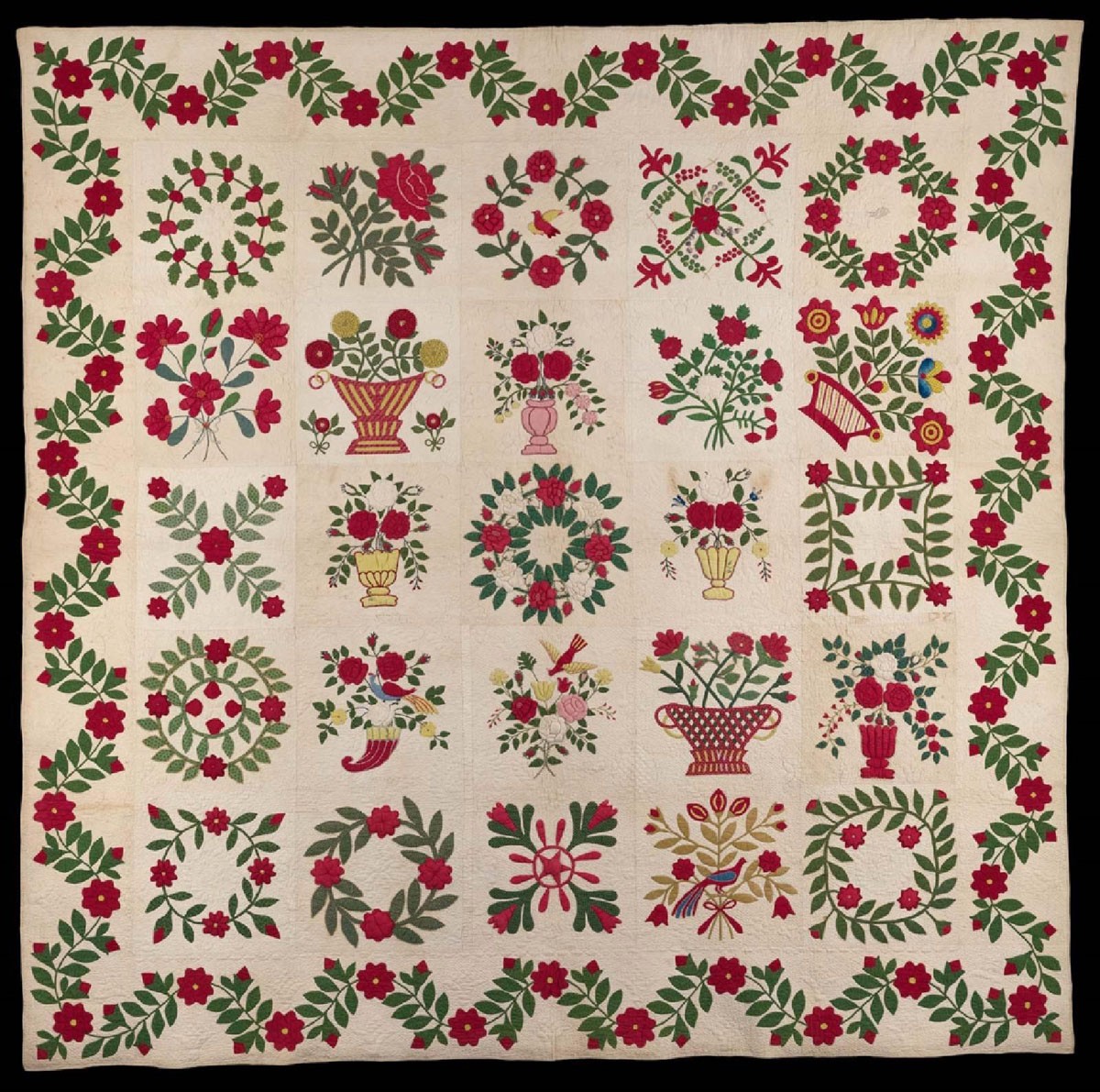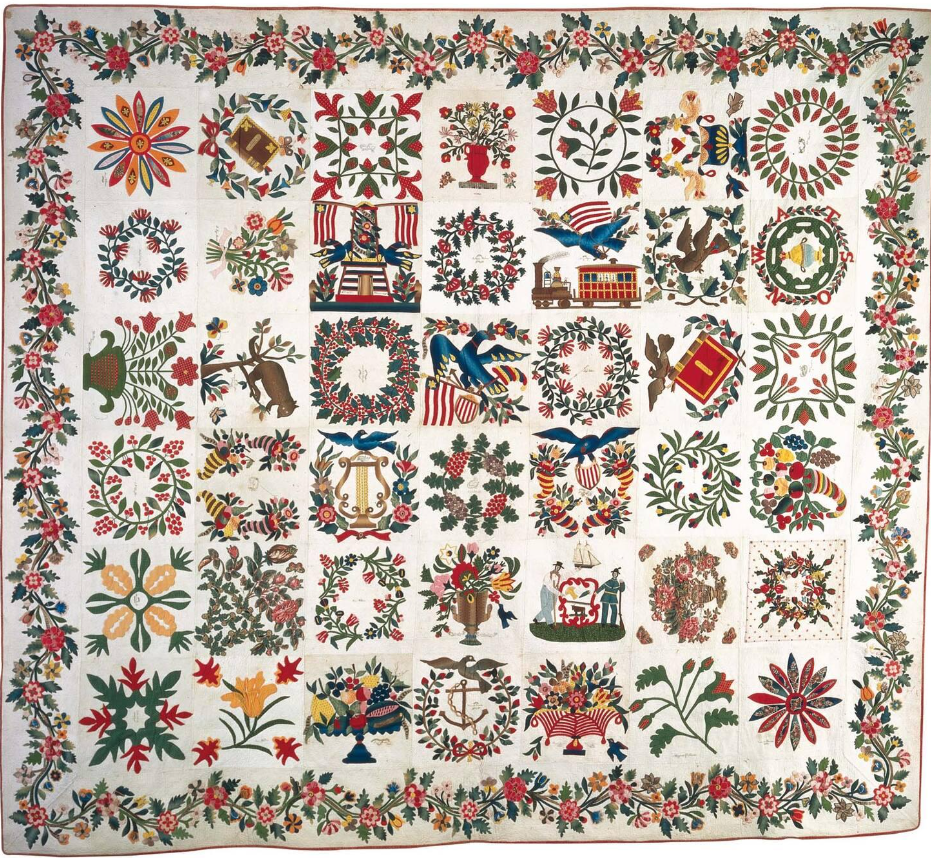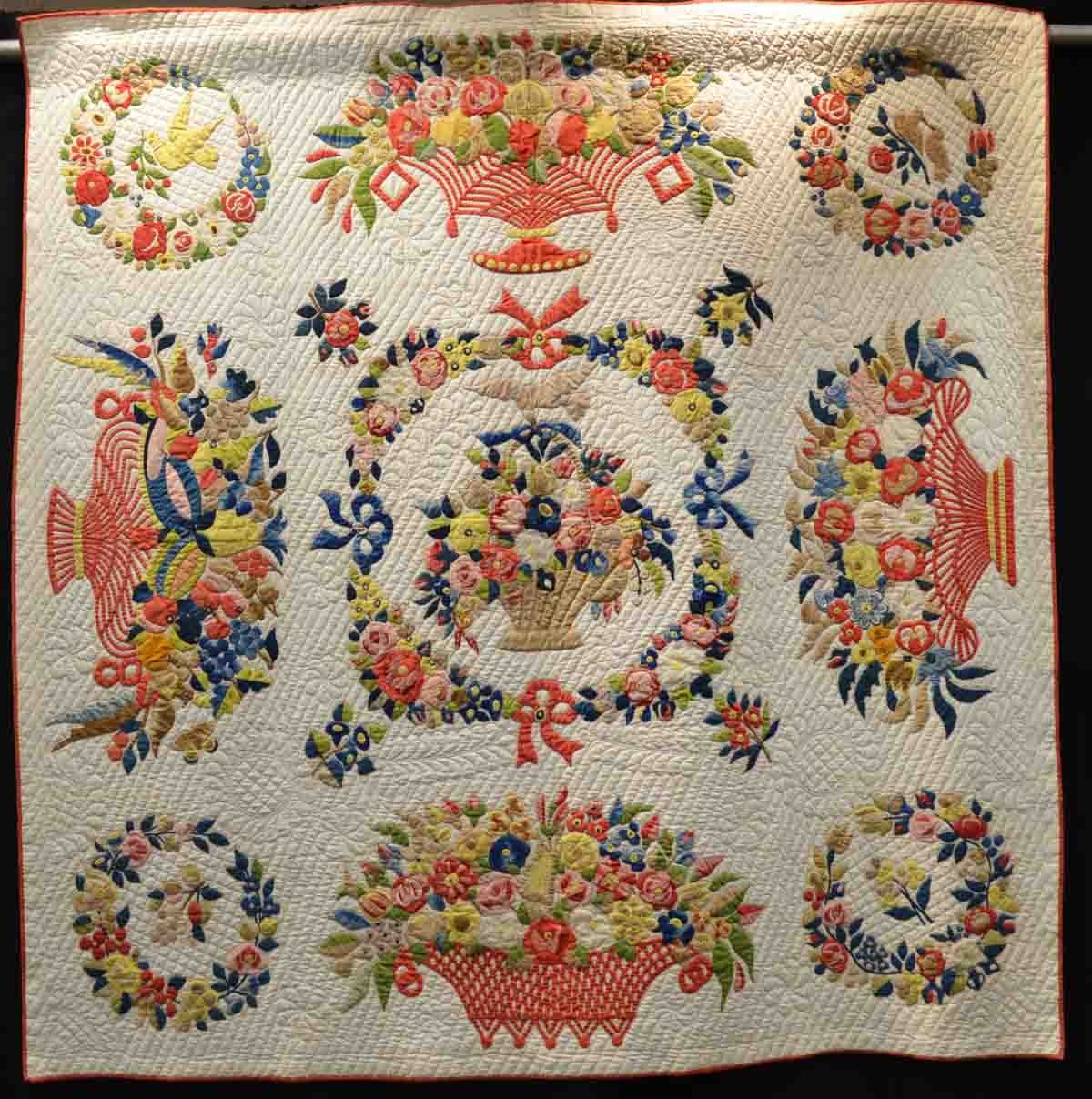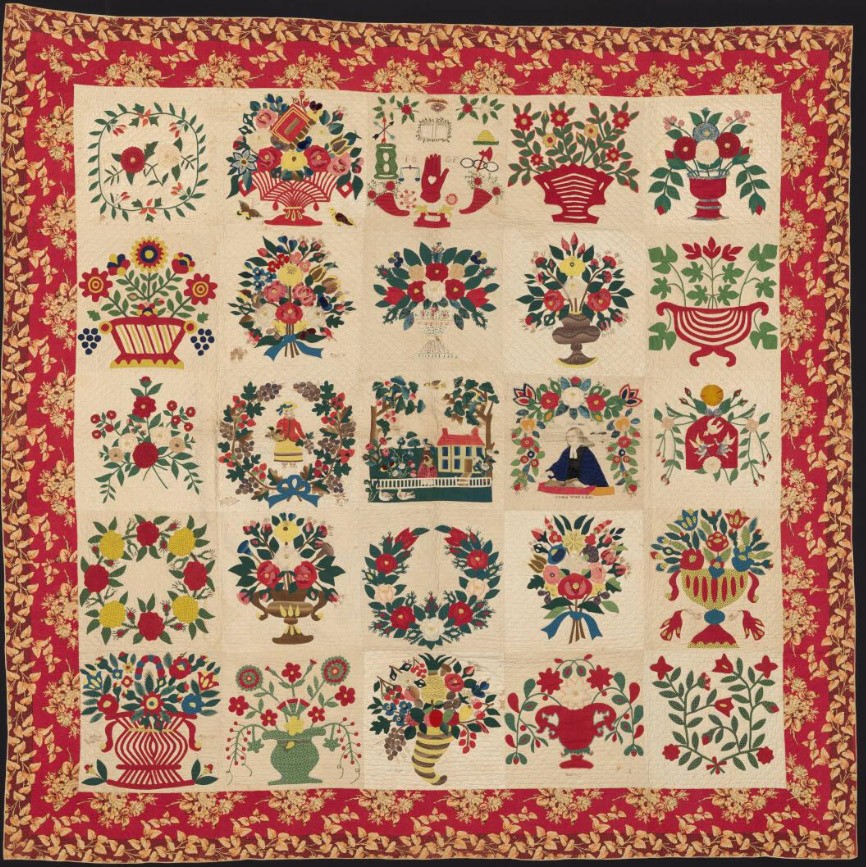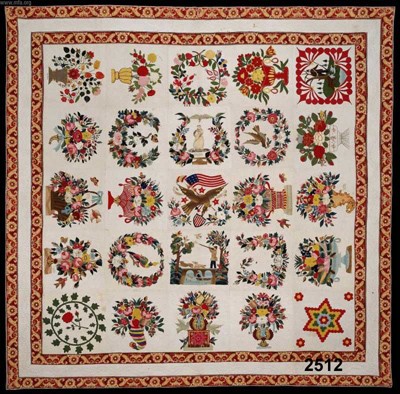
On December 22, 1848 The Baltimore Sun carried an article about stolen “five fancy bed quilts, some of which were of the most elegant styles of needle-work, being profusely adorned with mathematical figures, squares, histrionic [sic] representations, etc.” The theft took place in the yard of her residence on West Saratoga Street. Proof of the theft is shown because Officers Brice and Small arrested two on suspicion of theft, Matilda Howard and Williams Collins. Unfortunately, the case was dismissed because of lack of evidence. The paper went onto state that the “quilts were really splendid specimens of work, one hundred and fifty dollars having been offered for them and refused.” If we adjusted the price of $150 in 1845 it is equivalent in purchasing power to approximately $6,059.72 today. Definitely not your run of the mill...


